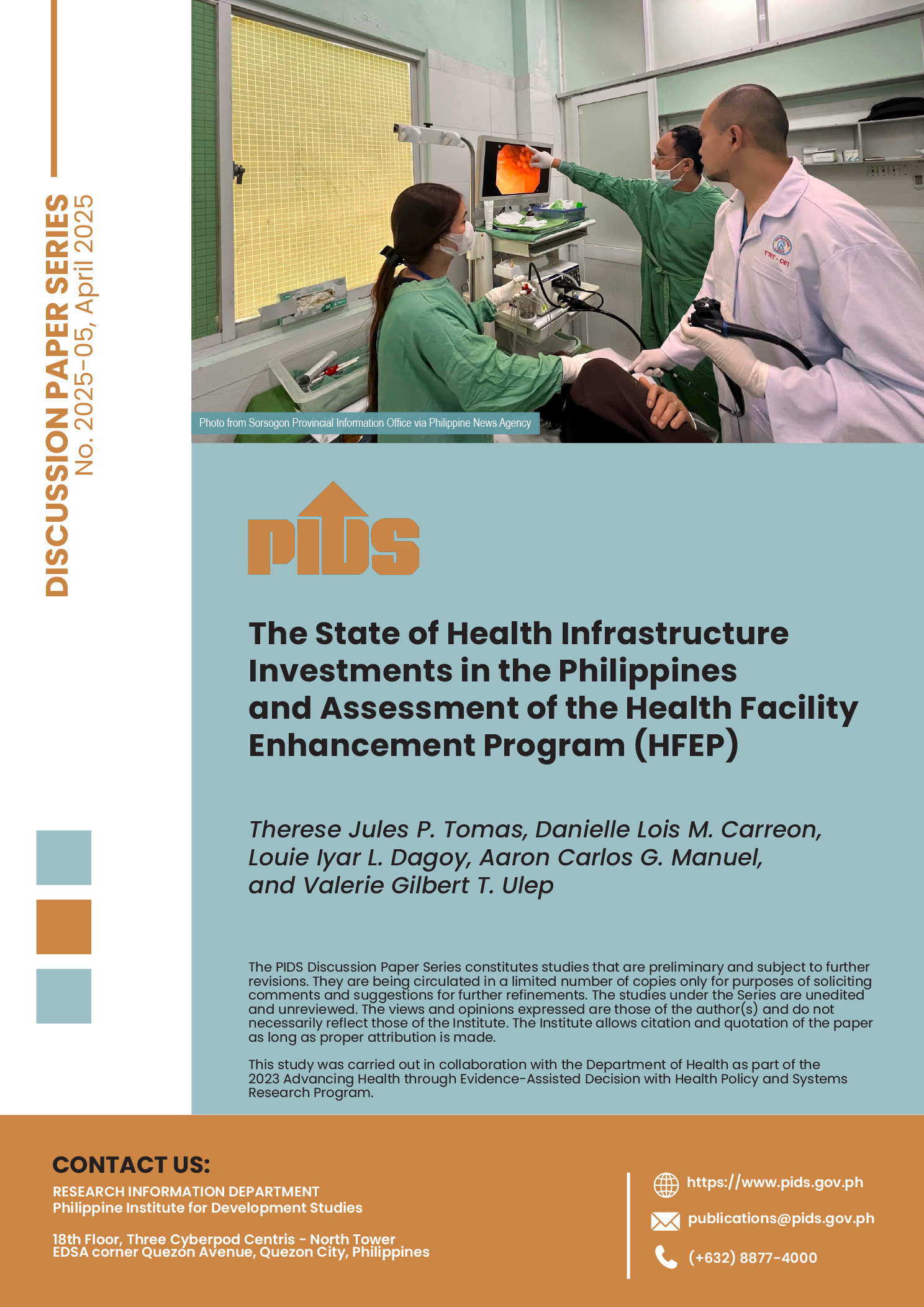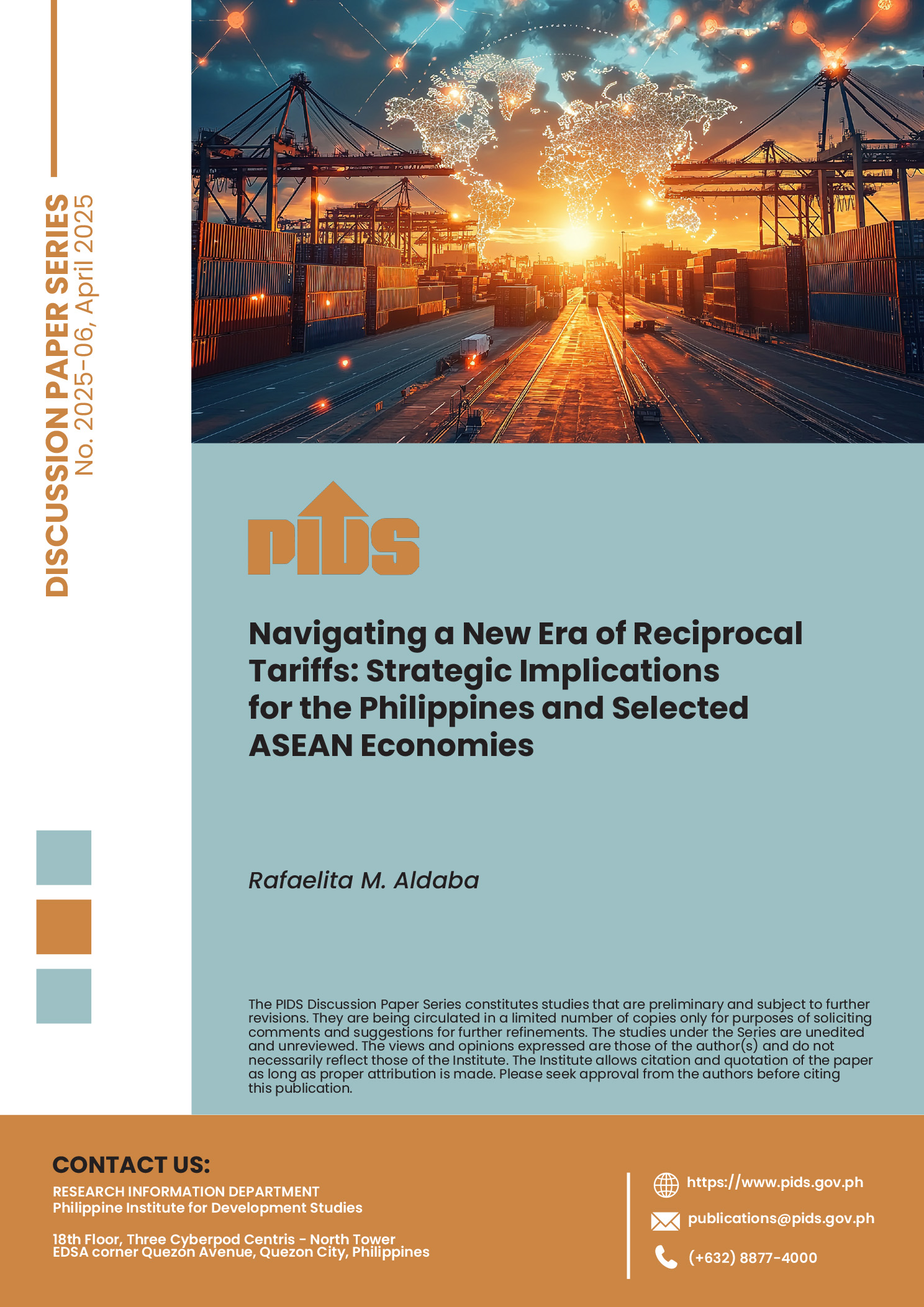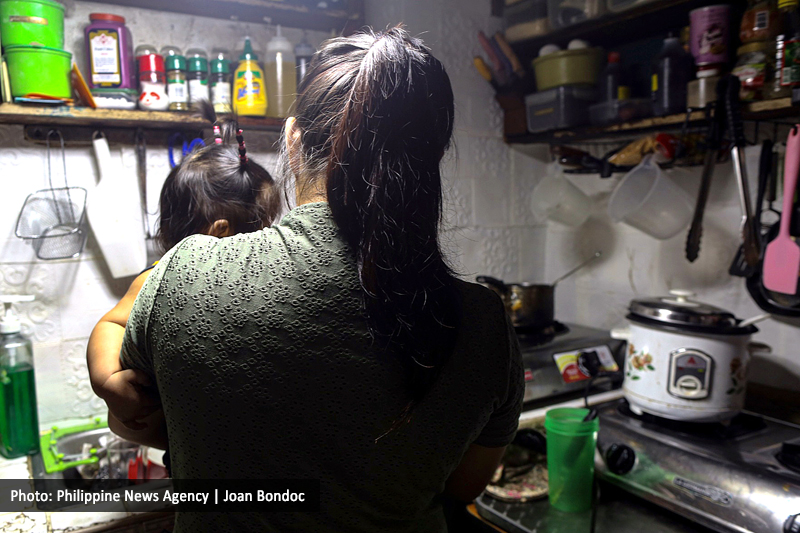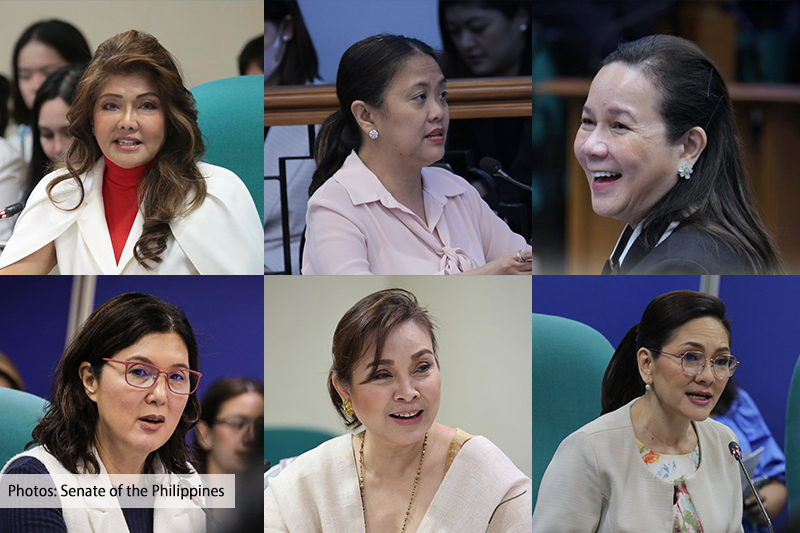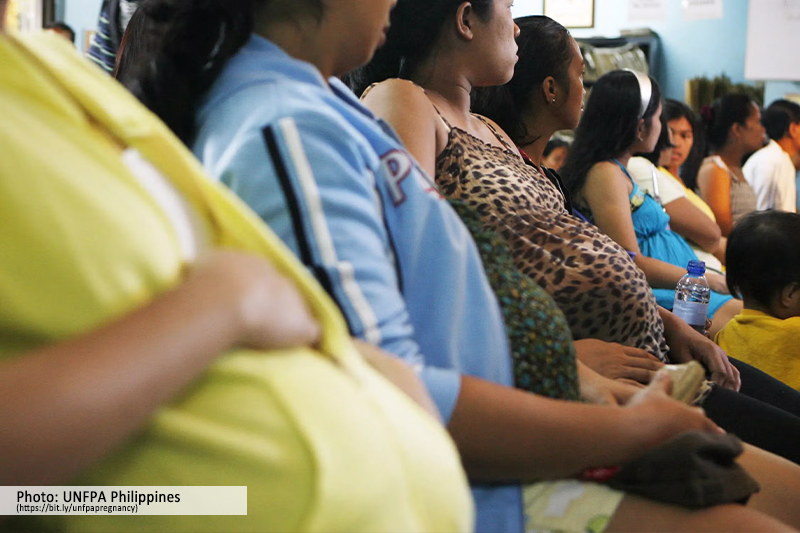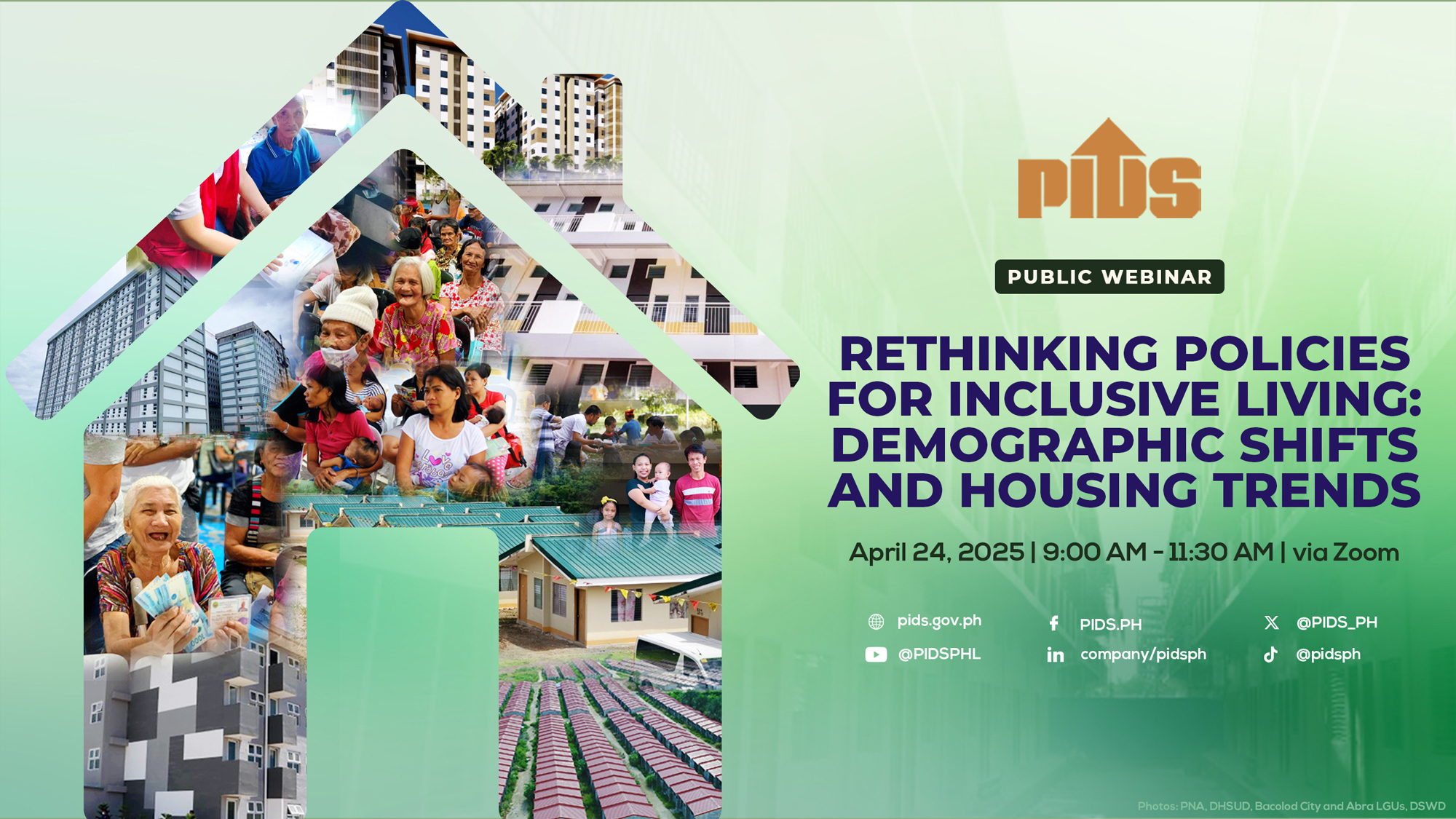With rapid speed, the COVID-19 pandemic has upended the global economy to an unprecedented and unforeseen magnitude. The measures imposed to mitigate the widespread effect of COVID-19 has put the global economy to an abrupt halt. Based on the half-yearly forecasts of the International Monetary Fund, dramatic drop in activity caused by the global lockdowns is expected to result in a 3% contraction of the global economy, resulting in a potential slump unparalleled since the Great Depression.[1] Countries affected have each adopted and implemented legal, fiscal, and economic measures, including tax deferrals, waiver of fees and charges, wage subsidies, government guarantees to small and medium enterprises, and provision of access to cheaper credit.[2]
The Philippines is among the countries affected by this global pandemic. The island of Luzon was placed under an Enhanced Community Quarantine (ECQ) from 17 March 2020 until 30 April 2020. Areas in Visayas and Mindanao are likewise under community quarantines imposed by their Local Government Units.
As a result of the ECQ, mass public transport facilities are restricted, school activities are suspended, mass gatherings are prohibited, and mobility is limited by strict home quarantine and work from home arrangements imposed in the public and private sector, except in enterprises providing basic necessities and activities related to food and medicine production, banks, money transfer services, power, energy, water and telecommunications supplies and facilities,[3] which are required to adhere to strict social distancing measures and to operate with a skeletal work force.[4] Export-oriented industries and Business Process Outsourcing establishments are allowed to remain operational, subject to the observance of strict social distancing measures and provision of temporary accommodation arrangements to their personnel, and the maintenance of a skeletal work force.[5]
The Philippine National Economic and Development Authority estimates that the economic damage of the ECQ would amount to a cumulative loss of PhP428.7 Billion to PhP1.355 Trillion in gross value added. A more recent study by the Philippine Institute for Development Studies, however, suggests that the Philippine economy can lose an amount of at least PhP273.6 Billion to as much as PhP2.5 Trillion as a result of COVID-19, with transportation, manufacturing, wholesale and retail trade sectors, as well as other services, bearing the brunt of the economic damage.[6]
To address potential economic damage, the Philippine Congress enacted Republic Act No. 11469 (“RA 11469”) on 23 March 2020, granting the President the power to adopt temporary emergency measures such as: moving statutory deadlines for payment of taxes and other charges; directing public and private banks and financial institutions to implement a minimum 30-day grace period for the payment of loans, without interests, penalties, fees or other charges; directing lessors to provide a minimum 30-day grace period for residential rentals without interest, penalties, fees and other charges; and implementing a program to transfer funds directly to households with income derived from the formal and informal sectors of the economy.[7]
Even assuming the ECQ is lifted as scheduled or at a later time, the shifts in economic activity, and the assimilation of new measures and work standards resulting from the COVID-19 pandemic, may continue to entail heavy and unexpected costs, warrant stricter regulations, and cause cash flow issues for already vulnerable sectors of the economy, presenting a continuing danger of illiquidity or insolvency.
Philippine Insolvency and Rehabilitation Laws
Republic Act No. 10142, or the Financial Rehabilitation and Insolvency Act (FRIA), was enacted to “encourage debtors, both juridical and natural persons, and their creditors to collectively and realistically resolve and adjust competing claims and property rights” and to “ensure a timely, fair, transparent, effective and efficient rehabilitation or liquidation of debtors.” It allows both insolvent juridical and natural persons, and their creditors, in a summary and non-adversarial manner, to restructure liabilities through court-supervised or pre-negotiated rehabilitation, out-of-court informal restructuring agreements or rehabilitation plans, and suspension of payments. The FRIA also expressly adopted the UNCITRAL Model Law on Cross-Border Insolvency, which allows for the recognition of foreign insolvency proceedings, subject to Section 136 thereof (on the liquidation of securities market participants), and the rules of procedure promulgated by the Supreme Court. Insolvent banks, insurance companies, and pre-need companies, however, are covered by R.A. No. 7653 (The New Central Bank Act), P.D. 1460 (Insurance Code), and R.A. 9829 (Pre-Need Code), with the FRIA only applying suppletorily.
Rehabilitation
Corporate rehabilitation is a remedy for corporations, partnerships and associations which foresee the impossibility of meeting their debts when they respectively fall due with an end view to restore and reinstate them to their former position of successful operation and solvency. The debtor is given a “fresh start” or “a new lease on life [to] thereby allow creditors to be paid their claims from [the debtor’s] earnings.”[8]
Court-Supervised Rehabilitation
Under the FRIA, court-supervised rehabilitation can be voluntary or involuntary.
A voluntary court-supervised rehabilitation may be initiated by the insolvent debtor through a verified petition, accompanied by: the approval of the owner in case of sole proprietorship; an approval by majority vote of the partners in case of partnership; or an approval by a majority vote of the board of directors or trustees, with authority from the stockholders or members representing at least two-thirds (2/3) of the outstanding capital stock or the members, in a meeting duly called for the purpose. A group of insolvent debtors may also jointly file a petition for rehabilitation in cases where one or more of its members foresee the impossibility of meeting debts as they fall due; when the financial distress would likely adversely affect the financial condition and/or operations of the other members; and/or the participation of the other group members is essential under the terms and conditions of the proposed Rehabilitation Plan.
On the other hand, an involuntary court-supervised rehabilitation may be initiated by any creditor or group of creditors with an aggregate claim of at least One Million Pesos (PhP1,000,000.00), or at least twenty-five percent (25%) of the subscribed capital stock or partners’ contribution, whichever is higher, by filing a verified petition based on the following grounds: (a) there is no genuine issue of fact or law on the claims of the creditors and that the due and demandable payments were not made for at least sixty (60) days, or the debtor has failed to meet liabilities as they fall due; or (b) a creditor, other than the petitioner/s, initiated foreclosure proceedings against the debtor that will prevent it from paying its debts as they become due or render it insolvent.
In both voluntary and involuntary rehabilitation, the petition must establish the debtor’s insolvency and the viability of its rehabilitation, provide a Rehabilitation Plan and nominate at least three (3) persons as Rehabilitation Receiver.
Should the petition be deemed sufficient in form and substance, the Rehabilitation Court will issue a Commencement Order whose effects generally retroact to the date of filing of the petition, and which shall include a Stay or Suspension Order that shall: (a) suspend all actions or proceedings, in court or otherwise, for the enforcement of claims against the debtor; (b) suspend all actions to enforce any judgment, attachment or other provisional remedy against the debtor; (c) prohibit the debtor from selling, encumbering, transferring or disposing in any manner of its properties except in the ordinary course of business; and (d) prohibit the debtor from making any payment of its outstanding liabilities as of the commencement date, except as may be provided by the FRIA.
Management and control of the insolvent debtor will remain with the existing management of the debtor, unless the Rehabilitation Receiver is appointed to take over under Section 36 of the FRIA, or the Rehabilitation Receiver and the Rehabilitation Court approve the creation of a management committee. During the rehabilitation, all disbursements, payments for sale, disposal, assignment, transfer or encumbrance of property, or any other act affecting title to or interest in property shall be subject to the recommendation/approval of the Rehabilitation Receiver and/or Rehabilitation Court.
In the event the Rehabilitation Court gives due course to the petition, the Rehabilitation Receiver shall confer with the debtor and all classes of creditors to consider their views and proposals in the review, revision or preparation of a new Rehabilitation Plan. Creditors shall convene as a whole, or per class, to vote on the Rehabilitation Plan, which shall be deemed approved by a class of creditors if members holding more than fifty percent (50%) of the total claims of such class vote in its. The Rehabilitation Plan shall be deemed rejected unless approved by all classes of creditors whose rights are adversely modified or affected by it. The votes of the creditors are based on the amount of their respective claims in the registry of claims prepared by the Rehabilitation Receiver.
Notwithstanding rejection, the Rehabilitation Court may still exercise its so-called “cram-down power” and confirm the Rehabilitation Plan if: (a) it complies with the FRIA; (b) the Rehabilitation Receiver recommends its confirmation; (c) the shareholders, owners or partners of the debtor lose at least their controlling interest as a result of the Rehabilitation Plan; and (d) it would likely provide the objecting class of creditors with compensation which has a net present value greater than what they would receive under liquidation.
The court shall have a maximum period of one (1) year from the date of filing of petition to confirm a Rehabilitation Plan.
Pre-Negotiated Rehabilitation
An insolvent debtor by itself, or jointly with any creditor, can have a pre-negotiated Rehabilitation Plan approved by the court through a verified petition. The pre-negotiated Rehabilitation Plan should be endorsed and approved by creditors holding at least two-thirds (2/3) of the total liabilities of the debtor, including secured creditors holding more than fifty percent (50%) of the total secured claims, and unsecured creditors holding more than fifty percent (50%) of the total unsecured claims. The Rehabilitation Court shall have a maximum period of one hundred twenty (120) days from the date of the filing of the petition to approve the Rehabilitation Plan, and if it fails to act within said period, the same shall be deemed approved.
Out-Of-Court Informal Restructuring Agreements or Rehabilitation Plans
An out-of-court informal restructuring/workout agreement or Rehabilitation Plan may be opted to if: (a) the debtor agrees; (b) it is approved by creditors representing at least sixty-seven percent (67%) of the secured obligations of the debtor; (c) it is approved by the creditors representing at least seventy-five percent (75%) of the unsecured obligations of the debtor; (d) it is approved by creditors holding at least eighty-five percent (85%) of the total liabilities of the debtor, secured or unsecured.
The parties may agree to a standstill period for a maximum of one hundred twenty (120) days pending negotiation of the out-of-court or informal restructuring/workout agreement or Rehabilitation Plan, which would be enforceable against the contracting parties and other creditors, provided that: (a) the agreement is approved by creditors representing more than fifty percent (50%) of the total liabilities of the debtor; (b) notice thereof, which invites creditors to participate in the negotiations, is published in a newspaper of general circulation in the Philippines once a week for two (2) consecutive weeks; and (c) the standstill period does not exceed one hundred twenty (120) days from effectivity.
The approval of an out-of-court restructuring/workout agreement or Rehabilitation Plan has the same legal effect as a confirmation of a Rehabilitation Plan in a court-supervised rehabilitation. Any amendment of an out-of-court restructuring/workout agreement or Rehabilitation Plan must be made according to the terms of the agreement and with due notice to all creditors. Either the insolvent debtor and/or creditor may seek court assistance to execute or implement such agreement or Rehabilitation Plan.
Liquidation
Liquidation under the FRIA can either be voluntary or involuntary.
Voluntary liquidation can be initiated by a debtor through a verified petition for liquidation. At any time during the pendency of court-supervised or pre-negotiated rehabilitation proceedings, the debtor, upon a verified motion, may also initiate liquidation proceedings in the same court where the rehabilitation proceedings are pending to convert the rehabilitation proceedings into liquidation proceedings.
Involuntary liquidation can be initiated through a verified petition for liquidation by three (3) or more creditors whose aggregate claim is at least either One Million Pesos (PhP1,000,000.00), or at least twenty-five percent (25%) of the subscribed capital stock or partner's contributions of the debtor, whichever is higher. The petition shall show that: (a) there is no genuine issue of fact or law on the claims/s of the petitioner/s and that the due and demandable payments thereon have not been made for at least one hundred eighty (180) days or that the debtor has failed generally to meet its liabilities as they fall due; and (b) there is no substantial likelihood that the debtor may be rehabilitated. At any time during the pendency of or after a court-supervised or pre-negotiated rehabilitation proceedings, three (3) or more creditors whose claim is at least either One Million pesos (Php1,000,000.00) or at least twenty-five percent (25%) of the subscribed capital or partner's contributions of the debtor, whichever is higher, may also initiate liquidation proceedings by filing a verified motion in the same court where the rehabilitation proceedings are pending to convert the rehabilitation proceedings into liquidation proceedings.
If the court finds the petition for liquidation sufficient in form and substance, it shall issue a Liquidation Order, which shall have the following effects: (a) the juridical debtor shall be deemed dissolved and its corporate or juridical existence terminated; (b) legal title to and control of all the debtor’s assets, except those exempt from execution, shall be deemed vested in the liquidator or, pending his election or appointment, with the court; (c) all contracts of the debtor shall be deemed terminated and/or breached, unless the liquidator, within ninety (90) days from the date of his assumption of office, declares otherwise and the contracting party agrees; (d) no separate action for the collection of an unsecured claim shall be allowed, and actions already pending will be transferred to the liquidator for him to accept and settle or contest. If the liquidator contests or disputes the claim, the court shall allow, hear and resolve such contest except when the case is already on appeal. In such a case, the suit may proceed to judgment, and any final and executory judgment therein for a claim against the debtor shall be filed and allowed in court; and (e) no foreclosure proceeding shall be allowed for a period of one hundred eighty (180) days.
The Liquidator shall submit to the Liquidation Court a Liquidation Plan within three (3) months from assumption of office.
Suspension of Payments
A verified petition for suspension of payments may be filed by an individual debtor who possesses sufficient property to cover all his debts but foresees the impossibility of meeting them when they fall due.
During the pendency of the petition and upon motion of the debtor, the court may issue an order suspending execution against the debtor and no creditor shall sue or institute proceedings to collect claims from the debtor from the time of the filing of the petition and for as long as proceedings remain pending, except: (a) creditors having claims for personal labor, maintenance, expense of last illness and funeral of the wife or children of the debtor incurred in the sixty (60) days immediately prior to the filing of the petition; and (b) secured creditors.
During the creditors’ meetings, the presence of creditors holding claims amounting to at least three-fifths (3/5) of the debtor’s liabilities shall be necessary for holding a meeting. For purposes of the creditors’ meeting and approval of the proposed agreement, the following is necessary to form a majority: (a) two-thirds (2/3) of the creditors voting unite upon the same proposition; and (b) the claims represented by said majority vote amount to at least three-fifths (3/5) of the total liabilities of the debtor mentioned in the petition, but a creditor who incurred his credit within ninety (90) days prior to the filing of the petition shall not be entitled to vote. Failure to meet these requirements shall result in the termination of the proceedings without recourse and the parties concerned shall be at liberty to enforce their respective rights.
If the court upholds the decision of the majority of the creditors to approve the proposed agreement or any amendment thereon, or when no opposition or objection to said decision has been presented, the court shall order that the agreement be carried out and all parties bound thereby to comply with its terms. The Order confirming the approval of the proposed agreement or any amendment thereon shall bind all creditors whose claims are included in the schedule of debts and liabilities submitted by the individual debtor and who were properly summoned, except: (a) creditors having claims for personal labor, maintenance, expenses of last illness and funeral of the wife or children of the debtor incurred in the sixty (60) days immediately prior to the filing of the petition; and (b) secured creditors who failed to attend the meeting or refrained from voting therein.
If the individual debtor fails, wholly or in part, to perform the agreement, all the rights which the creditors had against the individual debtor before the agreement shall revest in them.
The Philippines is among the countries affected by this global pandemic. The island of Luzon was placed under an Enhanced Community Quarantine (ECQ) from 17 March 2020 until 30 April 2020. Areas in Visayas and Mindanao are likewise under community quarantines imposed by their Local Government Units.
As a result of the ECQ, mass public transport facilities are restricted, school activities are suspended, mass gatherings are prohibited, and mobility is limited by strict home quarantine and work from home arrangements imposed in the public and private sector, except in enterprises providing basic necessities and activities related to food and medicine production, banks, money transfer services, power, energy, water and telecommunications supplies and facilities,[3] which are required to adhere to strict social distancing measures and to operate with a skeletal work force.[4] Export-oriented industries and Business Process Outsourcing establishments are allowed to remain operational, subject to the observance of strict social distancing measures and provision of temporary accommodation arrangements to their personnel, and the maintenance of a skeletal work force.[5]
The Philippine National Economic and Development Authority estimates that the economic damage of the ECQ would amount to a cumulative loss of PhP428.7 Billion to PhP1.355 Trillion in gross value added. A more recent study by the Philippine Institute for Development Studies, however, suggests that the Philippine economy can lose an amount of at least PhP273.6 Billion to as much as PhP2.5 Trillion as a result of COVID-19, with transportation, manufacturing, wholesale and retail trade sectors, as well as other services, bearing the brunt of the economic damage.[6]
To address potential economic damage, the Philippine Congress enacted Republic Act No. 11469 (“RA 11469”) on 23 March 2020, granting the President the power to adopt temporary emergency measures such as: moving statutory deadlines for payment of taxes and other charges; directing public and private banks and financial institutions to implement a minimum 30-day grace period for the payment of loans, without interests, penalties, fees or other charges; directing lessors to provide a minimum 30-day grace period for residential rentals without interest, penalties, fees and other charges; and implementing a program to transfer funds directly to households with income derived from the formal and informal sectors of the economy.[7]
Even assuming the ECQ is lifted as scheduled or at a later time, the shifts in economic activity, and the assimilation of new measures and work standards resulting from the COVID-19 pandemic, may continue to entail heavy and unexpected costs, warrant stricter regulations, and cause cash flow issues for already vulnerable sectors of the economy, presenting a continuing danger of illiquidity or insolvency.
Philippine Insolvency and Rehabilitation Laws
Republic Act No. 10142, or the Financial Rehabilitation and Insolvency Act (FRIA), was enacted to “encourage debtors, both juridical and natural persons, and their creditors to collectively and realistically resolve and adjust competing claims and property rights” and to “ensure a timely, fair, transparent, effective and efficient rehabilitation or liquidation of debtors.” It allows both insolvent juridical and natural persons, and their creditors, in a summary and non-adversarial manner, to restructure liabilities through court-supervised or pre-negotiated rehabilitation, out-of-court informal restructuring agreements or rehabilitation plans, and suspension of payments. The FRIA also expressly adopted the UNCITRAL Model Law on Cross-Border Insolvency, which allows for the recognition of foreign insolvency proceedings, subject to Section 136 thereof (on the liquidation of securities market participants), and the rules of procedure promulgated by the Supreme Court. Insolvent banks, insurance companies, and pre-need companies, however, are covered by R.A. No. 7653 (The New Central Bank Act), P.D. 1460 (Insurance Code), and R.A. 9829 (Pre-Need Code), with the FRIA only applying suppletorily.
Rehabilitation
Corporate rehabilitation is a remedy for corporations, partnerships and associations which foresee the impossibility of meeting their debts when they respectively fall due with an end view to restore and reinstate them to their former position of successful operation and solvency. The debtor is given a “fresh start” or “a new lease on life [to] thereby allow creditors to be paid their claims from [the debtor’s] earnings.”[8]
Court-Supervised Rehabilitation
Under the FRIA, court-supervised rehabilitation can be voluntary or involuntary.
A voluntary court-supervised rehabilitation may be initiated by the insolvent debtor through a verified petition, accompanied by: the approval of the owner in case of sole proprietorship; an approval by majority vote of the partners in case of partnership; or an approval by a majority vote of the board of directors or trustees, with authority from the stockholders or members representing at least two-thirds (2/3) of the outstanding capital stock or the members, in a meeting duly called for the purpose. A group of insolvent debtors may also jointly file a petition for rehabilitation in cases where one or more of its members foresee the impossibility of meeting debts as they fall due; when the financial distress would likely adversely affect the financial condition and/or operations of the other members; and/or the participation of the other group members is essential under the terms and conditions of the proposed Rehabilitation Plan.
On the other hand, an involuntary court-supervised rehabilitation may be initiated by any creditor or group of creditors with an aggregate claim of at least One Million Pesos (PhP1,000,000.00), or at least twenty-five percent (25%) of the subscribed capital stock or partners’ contribution, whichever is higher, by filing a verified petition based on the following grounds: (a) there is no genuine issue of fact or law on the claims of the creditors and that the due and demandable payments were not made for at least sixty (60) days, or the debtor has failed to meet liabilities as they fall due; or (b) a creditor, other than the petitioner/s, initiated foreclosure proceedings against the debtor that will prevent it from paying its debts as they become due or render it insolvent.
In both voluntary and involuntary rehabilitation, the petition must establish the debtor’s insolvency and the viability of its rehabilitation, provide a Rehabilitation Plan and nominate at least three (3) persons as Rehabilitation Receiver.
Should the petition be deemed sufficient in form and substance, the Rehabilitation Court will issue a Commencement Order whose effects generally retroact to the date of filing of the petition, and which shall include a Stay or Suspension Order that shall: (a) suspend all actions or proceedings, in court or otherwise, for the enforcement of claims against the debtor; (b) suspend all actions to enforce any judgment, attachment or other provisional remedy against the debtor; (c) prohibit the debtor from selling, encumbering, transferring or disposing in any manner of its properties except in the ordinary course of business; and (d) prohibit the debtor from making any payment of its outstanding liabilities as of the commencement date, except as may be provided by the FRIA.
Management and control of the insolvent debtor will remain with the existing management of the debtor, unless the Rehabilitation Receiver is appointed to take over under Section 36 of the FRIA, or the Rehabilitation Receiver and the Rehabilitation Court approve the creation of a management committee. During the rehabilitation, all disbursements, payments for sale, disposal, assignment, transfer or encumbrance of property, or any other act affecting title to or interest in property shall be subject to the recommendation/approval of the Rehabilitation Receiver and/or Rehabilitation Court.
In the event the Rehabilitation Court gives due course to the petition, the Rehabilitation Receiver shall confer with the debtor and all classes of creditors to consider their views and proposals in the review, revision or preparation of a new Rehabilitation Plan. Creditors shall convene as a whole, or per class, to vote on the Rehabilitation Plan, which shall be deemed approved by a class of creditors if members holding more than fifty percent (50%) of the total claims of such class vote in its. The Rehabilitation Plan shall be deemed rejected unless approved by all classes of creditors whose rights are adversely modified or affected by it. The votes of the creditors are based on the amount of their respective claims in the registry of claims prepared by the Rehabilitation Receiver.
Notwithstanding rejection, the Rehabilitation Court may still exercise its so-called “cram-down power” and confirm the Rehabilitation Plan if: (a) it complies with the FRIA; (b) the Rehabilitation Receiver recommends its confirmation; (c) the shareholders, owners or partners of the debtor lose at least their controlling interest as a result of the Rehabilitation Plan; and (d) it would likely provide the objecting class of creditors with compensation which has a net present value greater than what they would receive under liquidation.
The court shall have a maximum period of one (1) year from the date of filing of petition to confirm a Rehabilitation Plan.
Pre-Negotiated Rehabilitation
An insolvent debtor by itself, or jointly with any creditor, can have a pre-negotiated Rehabilitation Plan approved by the court through a verified petition. The pre-negotiated Rehabilitation Plan should be endorsed and approved by creditors holding at least two-thirds (2/3) of the total liabilities of the debtor, including secured creditors holding more than fifty percent (50%) of the total secured claims, and unsecured creditors holding more than fifty percent (50%) of the total unsecured claims. The Rehabilitation Court shall have a maximum period of one hundred twenty (120) days from the date of the filing of the petition to approve the Rehabilitation Plan, and if it fails to act within said period, the same shall be deemed approved.
Out-Of-Court Informal Restructuring Agreements or Rehabilitation Plans
An out-of-court informal restructuring/workout agreement or Rehabilitation Plan may be opted to if: (a) the debtor agrees; (b) it is approved by creditors representing at least sixty-seven percent (67%) of the secured obligations of the debtor; (c) it is approved by the creditors representing at least seventy-five percent (75%) of the unsecured obligations of the debtor; (d) it is approved by creditors holding at least eighty-five percent (85%) of the total liabilities of the debtor, secured or unsecured.
The parties may agree to a standstill period for a maximum of one hundred twenty (120) days pending negotiation of the out-of-court or informal restructuring/workout agreement or Rehabilitation Plan, which would be enforceable against the contracting parties and other creditors, provided that: (a) the agreement is approved by creditors representing more than fifty percent (50%) of the total liabilities of the debtor; (b) notice thereof, which invites creditors to participate in the negotiations, is published in a newspaper of general circulation in the Philippines once a week for two (2) consecutive weeks; and (c) the standstill period does not exceed one hundred twenty (120) days from effectivity.
The approval of an out-of-court restructuring/workout agreement or Rehabilitation Plan has the same legal effect as a confirmation of a Rehabilitation Plan in a court-supervised rehabilitation. Any amendment of an out-of-court restructuring/workout agreement or Rehabilitation Plan must be made according to the terms of the agreement and with due notice to all creditors. Either the insolvent debtor and/or creditor may seek court assistance to execute or implement such agreement or Rehabilitation Plan.
Liquidation
Liquidation under the FRIA can either be voluntary or involuntary.
Voluntary liquidation can be initiated by a debtor through a verified petition for liquidation. At any time during the pendency of court-supervised or pre-negotiated rehabilitation proceedings, the debtor, upon a verified motion, may also initiate liquidation proceedings in the same court where the rehabilitation proceedings are pending to convert the rehabilitation proceedings into liquidation proceedings.
Involuntary liquidation can be initiated through a verified petition for liquidation by three (3) or more creditors whose aggregate claim is at least either One Million Pesos (PhP1,000,000.00), or at least twenty-five percent (25%) of the subscribed capital stock or partner's contributions of the debtor, whichever is higher. The petition shall show that: (a) there is no genuine issue of fact or law on the claims/s of the petitioner/s and that the due and demandable payments thereon have not been made for at least one hundred eighty (180) days or that the debtor has failed generally to meet its liabilities as they fall due; and (b) there is no substantial likelihood that the debtor may be rehabilitated. At any time during the pendency of or after a court-supervised or pre-negotiated rehabilitation proceedings, three (3) or more creditors whose claim is at least either One Million pesos (Php1,000,000.00) or at least twenty-five percent (25%) of the subscribed capital or partner's contributions of the debtor, whichever is higher, may also initiate liquidation proceedings by filing a verified motion in the same court where the rehabilitation proceedings are pending to convert the rehabilitation proceedings into liquidation proceedings.
If the court finds the petition for liquidation sufficient in form and substance, it shall issue a Liquidation Order, which shall have the following effects: (a) the juridical debtor shall be deemed dissolved and its corporate or juridical existence terminated; (b) legal title to and control of all the debtor’s assets, except those exempt from execution, shall be deemed vested in the liquidator or, pending his election or appointment, with the court; (c) all contracts of the debtor shall be deemed terminated and/or breached, unless the liquidator, within ninety (90) days from the date of his assumption of office, declares otherwise and the contracting party agrees; (d) no separate action for the collection of an unsecured claim shall be allowed, and actions already pending will be transferred to the liquidator for him to accept and settle or contest. If the liquidator contests or disputes the claim, the court shall allow, hear and resolve such contest except when the case is already on appeal. In such a case, the suit may proceed to judgment, and any final and executory judgment therein for a claim against the debtor shall be filed and allowed in court; and (e) no foreclosure proceeding shall be allowed for a period of one hundred eighty (180) days.
The Liquidator shall submit to the Liquidation Court a Liquidation Plan within three (3) months from assumption of office.
Suspension of Payments
A verified petition for suspension of payments may be filed by an individual debtor who possesses sufficient property to cover all his debts but foresees the impossibility of meeting them when they fall due.
During the pendency of the petition and upon motion of the debtor, the court may issue an order suspending execution against the debtor and no creditor shall sue or institute proceedings to collect claims from the debtor from the time of the filing of the petition and for as long as proceedings remain pending, except: (a) creditors having claims for personal labor, maintenance, expense of last illness and funeral of the wife or children of the debtor incurred in the sixty (60) days immediately prior to the filing of the petition; and (b) secured creditors.
During the creditors’ meetings, the presence of creditors holding claims amounting to at least three-fifths (3/5) of the debtor’s liabilities shall be necessary for holding a meeting. For purposes of the creditors’ meeting and approval of the proposed agreement, the following is necessary to form a majority: (a) two-thirds (2/3) of the creditors voting unite upon the same proposition; and (b) the claims represented by said majority vote amount to at least three-fifths (3/5) of the total liabilities of the debtor mentioned in the petition, but a creditor who incurred his credit within ninety (90) days prior to the filing of the petition shall not be entitled to vote. Failure to meet these requirements shall result in the termination of the proceedings without recourse and the parties concerned shall be at liberty to enforce their respective rights.
If the court upholds the decision of the majority of the creditors to approve the proposed agreement or any amendment thereon, or when no opposition or objection to said decision has been presented, the court shall order that the agreement be carried out and all parties bound thereby to comply with its terms. The Order confirming the approval of the proposed agreement or any amendment thereon shall bind all creditors whose claims are included in the schedule of debts and liabilities submitted by the individual debtor and who were properly summoned, except: (a) creditors having claims for personal labor, maintenance, expenses of last illness and funeral of the wife or children of the debtor incurred in the sixty (60) days immediately prior to the filing of the petition; and (b) secured creditors who failed to attend the meeting or refrained from voting therein.
If the individual debtor fails, wholly or in part, to perform the agreement, all the rights which the creditors had against the individual debtor before the agreement shall revest in them.

